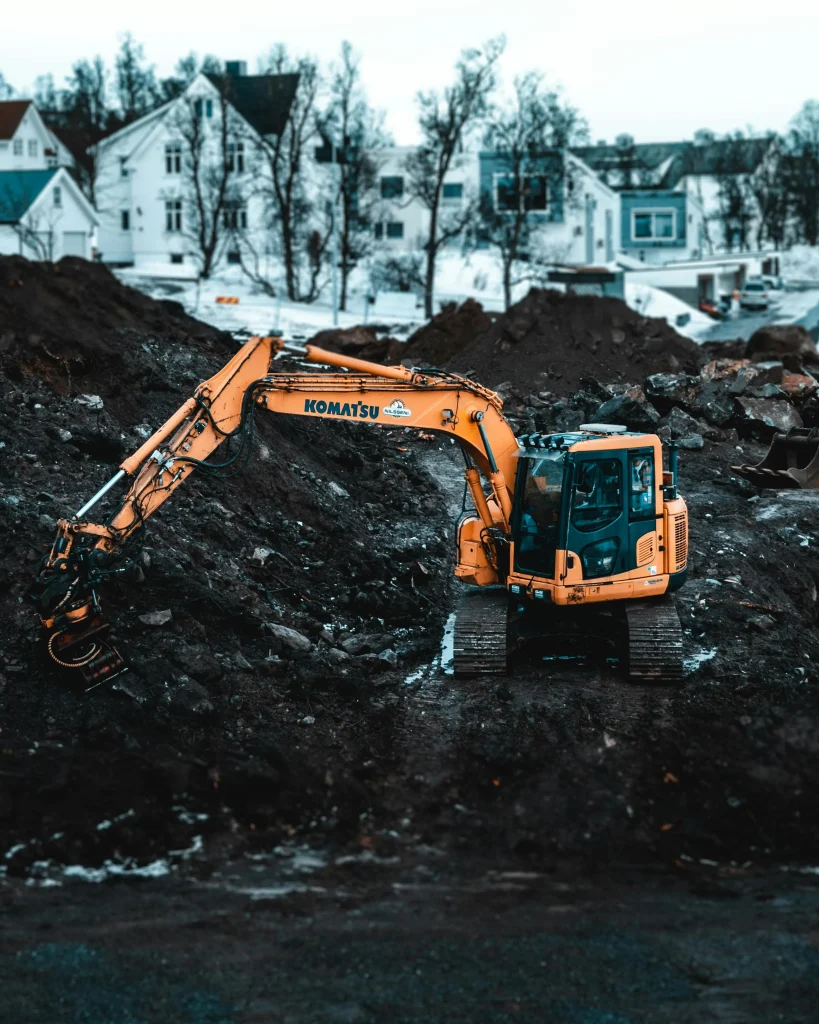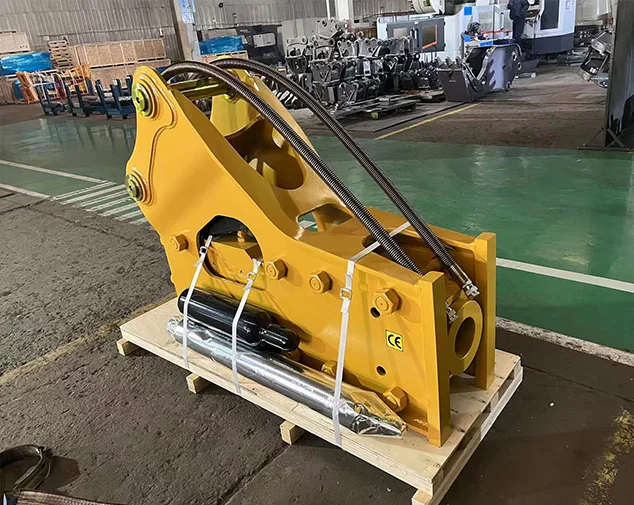What’s the Safest Way to Dig a Trench for Your Next Project?
Trenching is usual in construction. But if you done improperly, it will be dangerous. Guangdong Kingho Technology Co., Ltd. Has durable excavator attachment to make your operation safe and efficient.
Pre-Digging Safety Steps
Before you start digging, you need to plan and get ready. This cuts down risks and makes the job smoother.
Checking the Site
First, take a good look at where you’re digging. Check the dirt type, how deep the trench will be, and what’s nearby, like houses or roads. This helps you spot trouble early, like shaky ground. Most trench accidents happen in trenches 5 to 15 feet deep, and cave-ins are the biggest danger. Checking the dirt type keeps workers safe ( Source: Know the Different Excavation Requirements for Your Projects, NAHB). Guangdong Kingho Technology has strong tools like hydraulic breakers and rock buckets. These are great for digging through tough dirt safely, which lowers the chance of walls caving in.
For example, if the dirt is loose, you’ll need extra support. A rock bucket can dig clean without messing up the trench sides. Knowing the site helps you pick the right tools and stay safe.
Planning and Getting Permits
You might need permits to dig, depending on where you are and how big the job is. Get these before you start. Also, make a plan for the trench. Think about what could go wrong, like water piling up or machines breaking. A good plan gets your team ready for surprises.
For instance, if rain’s coming, plan to stop or have pumps ready. Guangdong Kingho Technology’s hydraulic quick hitches let you swap tools fast if the weather changes, keeping the job on track.
Getting Equipment and People Ready
Having the right gear is super important. Guangdong Kingho Technology makes awesome tools like excavator buckets, hydraulic shears, and rippers. These are built tough to avoid breaking, which keeps the job safe. Make sure all workers know how to use these tools. They should wear safety gear, like hard hats, gloves, and bright vests, especially near roads.
For example, someone using a hydraulic breaker needs to know how to handle it right. This stops accidents and keeps the trench steady. Everyone on the team should know the safety rules before digging starts.
Safe Trenching Techniques
Digging a trench the right way keeps everyone safe. Here’s how to do it.
Trench Design and Size
How you shape the trench matters a ton. OSHA says trenches need to be sloped or held up to stop them from falling in. For steady dirt, a 45-degree slope (1:1 ratio) usually works. For loose or wobbly ground, you need extra stuff, like trench boxes or hydraulic shoring.
Guangdong Kingho Technology’s hydraulic quick hitch lets you switch to a rock bucket or ripper fast. This helps dig trenches that stay strong and safe. For trenches deeper than 5 feet, always use supports to keep workers safe from cave-ins.
Digging Steps
Start by marking where the trench will go. Clear away junk, like sticks or rocks. Dig in small bits, not all at once. This keeps the trench walls steady. Check the walls a lot for cracks or signs they might fall. If the trench is over 5 feet deep, use shoring or a trench box, like OSHA says.
Guangdong Kingho Technology’s hydraulic shears and rippers are great for tough dirt. They cut through soil without shaking the walls too much. For instance, a ripper can break up hard ground, making it easier to dig safely.
Handling Weather and Water
Rain or water can mess up a trench. Use pumps to clear out water if it builds up. If a big storm’s coming, stop digging until it’s safe. Guangdong Kingho Technology’s excavator buckets are built to handle wet or rough conditions, so you can keep the trench steady even in bad weather.
For example, if water sneaks in from a nearby creek, a pump can keep the trench dry. This stops the walls from getting weak and caving in.
Post-Digging Safety and Cleaning Up
After digging, you gotta wrap things up safely. This keeps the site secure and ready for what’s next.
Backfilling and Packing Down
When the trench is done, fill it back in quick. This stops the dirt from sinking later, which could mess things up. Fill in small layers and pack each one down tight. Guangdong Kingho Technology’s compaction wheels are perfect for this. They make sure the dirt stays firm and even.
For example, loose dirt could sink and mess up pipes or cables. Packing it tight with a compaction wheel keeps everything solid.
Clearing Equipment and the Site
When you’re done, take all tools and machines off the site. Store them safely so nothing breaks. Check the area for leftover stuff, like dirt piles or broken tools. Guangdong Kingho Technology’s excavator clamp arms make it easy to move heavy things away. This keeps the site clean and safe.
For instance, a bucket left behind could trip someone. A quick cleanup with clamp arms makes sure the area is safe.
Extra Tips for Safe Trenching
Keeping Equipment Away from Edges
Don’t park big machines, like excavators, too close to the trench. OSHA says keep them at least 2 feet from the edge to stop cave-ins. Dirt piles from digging should also stay 2 feet away.
Guangdong Kingho Technology’s excavator buckets let you move dirt without piling it too close. This keeps the trench steady and workers safe.
Safe Entry and Exit
For trenches deeper than 4 feet, you need a ladder or ramp to get in and out. The ladder should stick out 3 feet above the trench and be within 25 feet of workers. This makes it easy to get out fast if something goes wrong.
Testing the Air
If the trench is over 4 feet deep, check the air for bad gases or low oxygen. Use tools like gas detectors to make sure it’s safe to work. OSHA says trenches over 4 feet deep need air tests for low oxygen or bad gases. This keeps workers from getting sick or hurt. ( OSHA regulation for trench work, Frontline Blog)
Why Choose Guangdong Kingho Technology’s Tools?
Guangdong Kingho Technology Co., Ltd. makes top-notch tools that make trenching safer and faster. Their hydraulic breakers can bust through hard ground without wrecking the trench. Their rock buckets are great for rocky spots, keeping the walls steady. Plus, hydraulic quick hitches let you swap tools fast, so you don’t lose time.
More Ways Kingho Tools Help
Saving Time and Cash
Using Guangdong Kingho Technology’s tools saves time because they’re built to work fast and not break down. For example, a hydraulic quick hitch lets you change from a ripper to a rock bucket in seconds. This means less waiting and more digging, which saves money on workers’ time.
Keeping Accidents Away
Safe digging with Kingho’s tools cuts down on accidents. Their excavator buckets dig clean, so the trench walls don’t get shaky. Fewer accidents mean fewer delays and happier workers. For instance, a steady trench means no one gets hurt by a cave-in.
Helping the Planet
Kingho’s attachments are durable, so it can be used for a long time without replacement.
Easy Tool Maintenance
Kingho’s tools are easy to take care of. This keeps your tools working great and stops breakdowns that could slow down the job.
Conclusion
If your operation is right, digging a trench will be easy and safe. It’s important to use reliable tools, follow OSHA rules, and plan every step. Kingho’s excavator buckets, hydraulic breakers, and compaction wheels can help you dig safely.
FAQ
Q1. How can I prevent a trench collapse?
A: To prevent trench collapses, ensure that the trench is properly sloped, shored, or shielded based on the soil conditions. Using reliable equipment, such as hydraulic shears or rock buckets, to avoid excessive force on trench walls is also essential.
Q2. What are the best tools for digging a trench safely?
A: The best tools for safe trenching include excavators equipped with rippers, hydraulic quick hitches, and excavator buckets designed for the specific soil and trenching needs of the project.
Q3. Can I dig a trench without professional equipment?
A: While small-scale projects may use basic tools, for larger or more complex trenches, professional equipment like those offered by Guangdong Kingho Technology is essential. These tools provide enhanced stability and efficiency, reducing the risks associated with digging deep or wide trenches.





